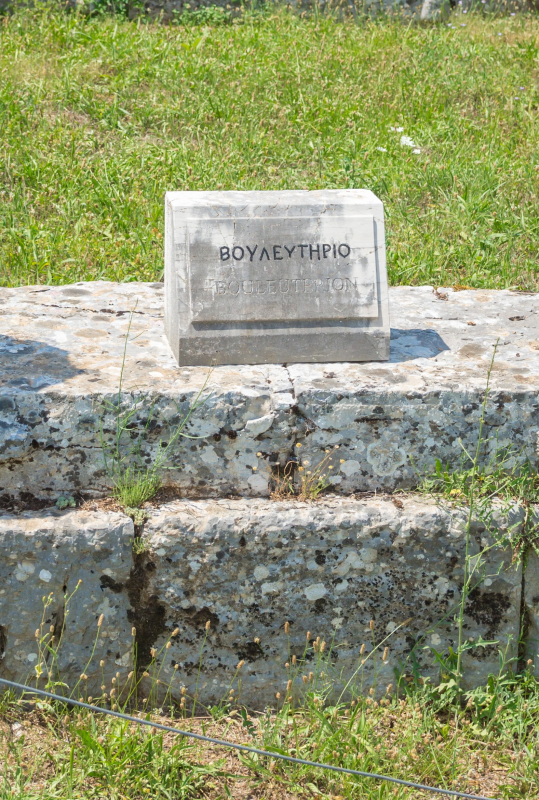The Bouleuterion (council or assembly house) is built on the side of the hill. The central hall has an area of 1250-1300 m2; the walls had a stone foundation (which survives) and an upper section made with unbaked bricks (now lost). Eight Ionic columns and 14 buttresses supported the roof. The members of the council sat on rough stone benches (some survive higher on the slope). The great stone altar near the south wall is dedicated to Zeus Naios (of the Naiads) and Bouleus (the Counselor), as well as Dione. Next to it were the wooden chairs for the speakers and a stone ballot stand for voting. The Bouleuterion was also used during the Naia Games for the trial of athletes who violated the rules.
3. Bouleuterion
For the longest time Dodona consisted of little more than a couple of simple temples, the sacred oak tree, a few tables, and some jars. And then enters Pyrrhus, an ambitious young king who wanted to transform the world.
Stories
Time for politics
The new Alexander
Dodona flourished during the reign of King Pyrrhus. He was an ambitious ruler who wished to emulate Alexander the Great by creating an empire to the west of Greece. He followed a successful expansionist policy that enabled him to finance grandiose projects throughout Epirus. He made Dodona the religious center of his kingdom and initiated a major building programme. He enlarged the temple of Zeus, he constructed the bouleuterion, he built two temples to Hercules and to Aphrodite, and he erected the large theater. He also fortified the city (on the acropolis, still unexcavated) by a circuit wall.
Friends in high places
The stone altar in the bouleuterion was dedicated by Charops, the son of Machatas. He was a well-principled man from Thesprotia, who also happened to be a friend of the Romans. In 198 BCE they were engaged in a war with Philip V of Macedon, but their legions were impeded by the strong defensive position of the Macedonians on the banks of the river Aoös in northwestern Greece. Charops showed the Roman general Titus Flamininus a route that enabled him to circumvent King Philip’s positions. Six years later, Charops was sent by his countrymen on an embassy to King Antiochus III the Great; he begged him to allow the Epirotes not to fight with him, unless he was strong enough to protect them against the Romans.
Powered by Clio Muse Tours
